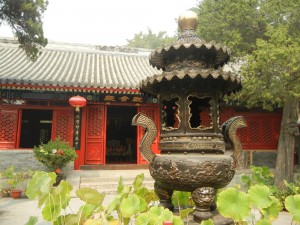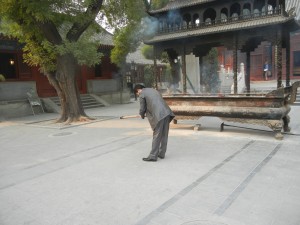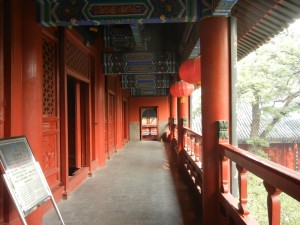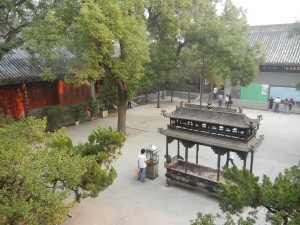In China, I visited many religion’s places of worship. Most shared the same traditional Chinese features.
The first part of this series explores how they blend with Islam in China. In this final part, we’ll see how they permeate other religions, and why they’re so deeply rooted.
Above, is the rear hall of the Fa Yuan temple in Beijing. It’s a Buddhist temple, and it was first built in the 7th century (its current buildings are from the Ming and Qing dynasties). But in spite of its deep Buddhist roots, the temple reflects Chinese homes, palaces and cities by being a rectangular series of courtyards oriented to the 4 directions.
The above shot looks to one of the sides. The side buildings lead you through a series of courtyards towards the rear hall, as they do in Xi’an’s Great Mosque, and in Hutongs. Buddhism has been practiced in China at least since the 1st century CE, and it has had many forms. But though it was imported from India and Central Asia, Chinese cultural patterns are often interlaced with it.
Daoism is native to China, so it’s no surprise that most Daoist temples follow the same pattern–a rectangular series of courtyards oriented to the 4 directions, and proceeding towards a main hall. In the above picture from Beijing’s Baiyun Guan (White Cloud Temple), a man bows in the 4 directions before leaving burning incense in the pavilion behind him.
This shot is from the upper floor of the rear hall. And–
This picture looks out from the same vantage point, into the innermost courtyard. You can clearly see its square 4 directional orientation.
This orientation to the 4 directions is very ancient in China. Traditional Chinese world-views are pervasive because they have blended several ideas, which comprise a way of thinking that’s very rich. These ideas include:
The sense of holistic flow of energies,
and many others, which we’ll soon explore.
All these ideas reinforce a sense of a holistic field all life forms share, which is in harmony. The places of worship that Islam, Buddhism and Daoism in China use orient people to the 4 directions, and this harmonizes folks with all domains in nature, and with domestic, palace and civic architecture (which also emphasize the 4 directions). All domains thus resonate with each other in an intimate world–an idea that many Chinese hearts resonate with. No wonder why so many religions and secular institutions have shared it since ancient times. The smart money’s on its continuity in the future.






Comments on this entry are closed.